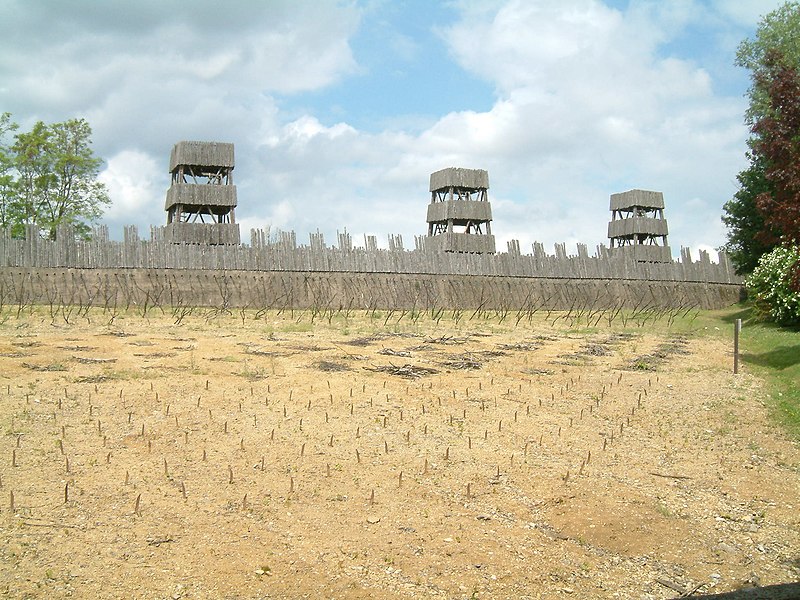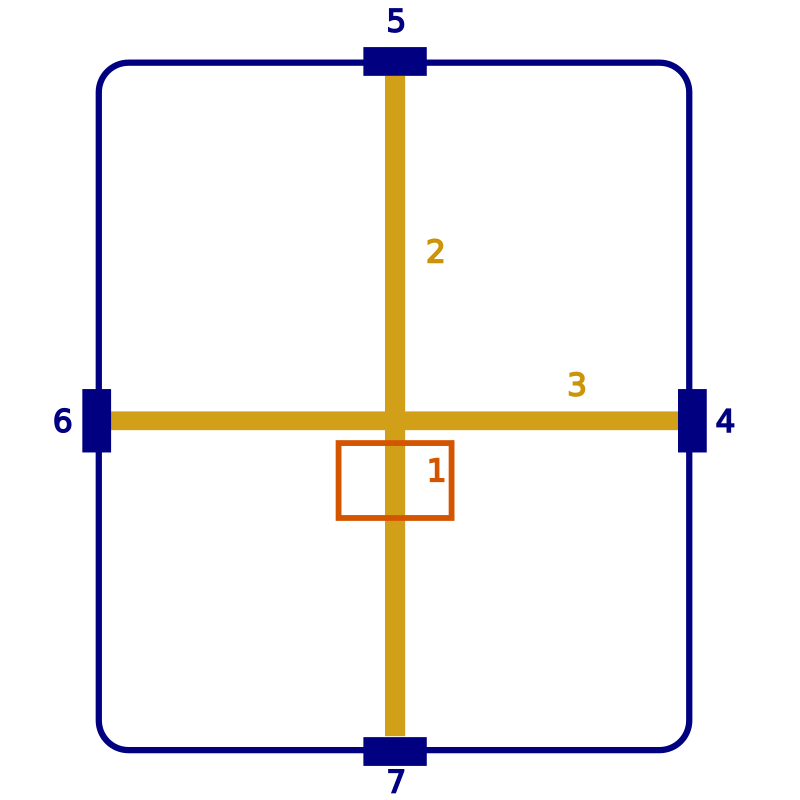A camp of stage of eight legions (for 48 000 men, understood muleteers) has a rectangular shape of 655 on 610 meters aside approximately, is a 40 hectare surface. A camp of wintering or permanent would twice more be big.
For tactical reasons, the place is rather chosen in height. But the essential criteria are: the safe and easy access (because the camp is established at the end of the day, thus the troops are tired); the presence of a water source; sufficient meadows for the feed of horses and used beasts of burden; the most close possible ground, with enough slope for the drainage: neither rocks, nor roots. It's better to be near a wood to build the camp. But we know it where everything is stone dry.
The plan is always the same, what allows a very fast construction. The tribune and the centurions in charge of the establishment of the camp measure the ground and fix the location of the prætorium (the tent of the general), squared by 60 meters aside. The white flag crashed in this place serves as mark all around of which gets organized all the camp: ways, tents, forum and surrounding wall. Behind the surrounding wall, a release of about sixty meters is left free to allow movements of the units, and put the first rows of tents shielded from the opposite jets.
Two main ways, the via principalis and the decumanus, get away themselves with right angle in front of the prætorium. However the number of legions the camp shelters is higher, one via parallel quintana in this via principalis is also drawn.
Crack troops camp on all sides of the prætorium, formed by foot soldiers and by riders who live in long rectangular camps divided into ten barracks, welcoming eight soldiers each. A whole century lives in a camp, established by a succession of copies-rooms. The first one is used as cloakroom to the soldiers to store their weapons and other cumbersome personal effects. The second is the barracks itself, with a fireplace and bedsteads stacked to sleep eight men of the contubernium, placed under the supervision of a leader of barracks. Every barrack consists of a room preceded by an anteroom on the ground of hard-packed surface.
Valetudinaria is medical zones incorporated into the camp from the professionalization of the armies of Auguste at least, and are the military versions of aesculapia.


Aucun commentaire:
Enregistrer un commentaire